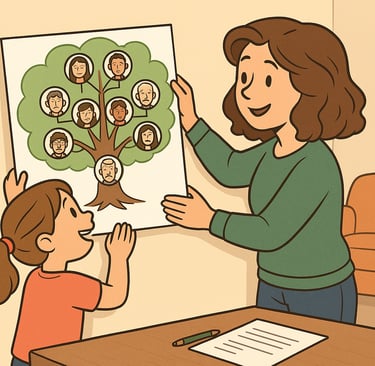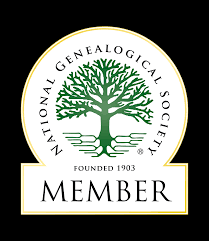Rooted in History: How to Build and Share Your Family Tree
Creating a family tree is about more than tracing names across generations. It’s a way to connect with the past, preserve meaningful stories, and better understand your heritage. Whether you are just beginning your journey or building on years of research, a family tree can uncover valuable insights and strengthen bonds across your family. This post will walk you through how to get started, select the right tools, and discover ways to involve your loved ones and local community in keeping history alive. With the holidays approaching, it’s the perfect opportunity to sit down with relatives, ask important questions, and begin recording your family’s story for generations to come.
-Aimee Rose-Haynes
11/7/20253 min read


A family tree is more than just a chart of names and dates. It is a living record of your roots and a way to honor the people who came before you. Whether you are just beginning your journey or diving deeper into generations of family history, building a family tree can be both meaningful and rewarding.
Where do you start?
Start with yourself and work backward. Use vital records like birth, marriage, and death certificates to document each generation. Talk to relatives, gather family photos, scan obituaries, and review any documents tucked away in family Bibles or old boxes. From there, you can begin branching out with census records, military documents, land deeds, and even DNA testing to confirm connections.
The value of conversations with older generations
Some of the most valuable information you’ll ever collect won’t be found in a record—it will come directly from the memories of your parents, grandparents, and other elders. Setting aside time to sit with them and ask questions is one of the best ways to preserve family history.
Ask open-ended questions such as:
What was your childhood like?
What traditions or holidays were most important in your family?
Who were your closest friends or mentors growing up?
What do you remember about your parents and grandparents?
What were the biggest challenges or proudest moments in your life?
Encourage them to share stories, even small details, because those often bring ancestors to life in a way no document can. Recording these conversations... whether by writing them down, audio recording, or video. This ensures these memories won’t be lost. Their stories add depth, emotion, and personality to the family tree, turning names and dates into people with rich lives worth remembering.
Where can you build a family tree?
There are several platforms available to help you get started:
Ancestry allows you to build a family tree for free. A subscription is required to view historical records. Ancestry also has DNA kits for an additional fee.
FamilySearch offers a completely free platform with a shared global tree, meaning your relatives may already be in the system. FamilySearch offers free records and has a large collection of digitized books.
MyHeritage allows free trees for up to 250 individuals. After that, a subscription is needed to continue expanding. My Heritage offers DNA testing for an additional fee.
Family Echo is a simple and free website where you can create and privately share your family tree.
WikiTree is another free and collaborative platform that emphasizes accuracy and sourcing. It also allows you to include details about your DNA tests on your profile by listing where you have tested. This can be especially useful when exploring a potential family connection. If someone from that line has also tested, their profile may show which company was used, giving you guidance on where to test to confirm the relationship.
Why does this matter?
A family tree can reveal migration patterns, name changes, cultural roots, and even reconnect you with long-lost relatives. For those exploring Indigenous ancestry or searching for biological family, a tree provides the structure to organize your findings and identify patterns. It helps bring clarity to your research and serves as a bridge between generations.
Tip to remember:
Document your sources and keep notes on what is confirmed and what still needs more research. Genealogy is detective work, and clear records will help both you and others avoid confusion.
Share your tree with the community:
You can make a copy of your family tree and donate it to your local library’s genealogy room or historical society. Many organizations are eager to preserve local history and make it available to others who are researching the same families or regions.
Get kids involved:
Introduce children to their family history by helping them create their own family tree. Encourage them to draw portraits of their ancestors and label each one with names and stories. This hands-on activity makes history personal and helps build a lasting interest in their heritage.
Your story begins with your ancestors. Start building your tree and see just how far the branches can grow.




